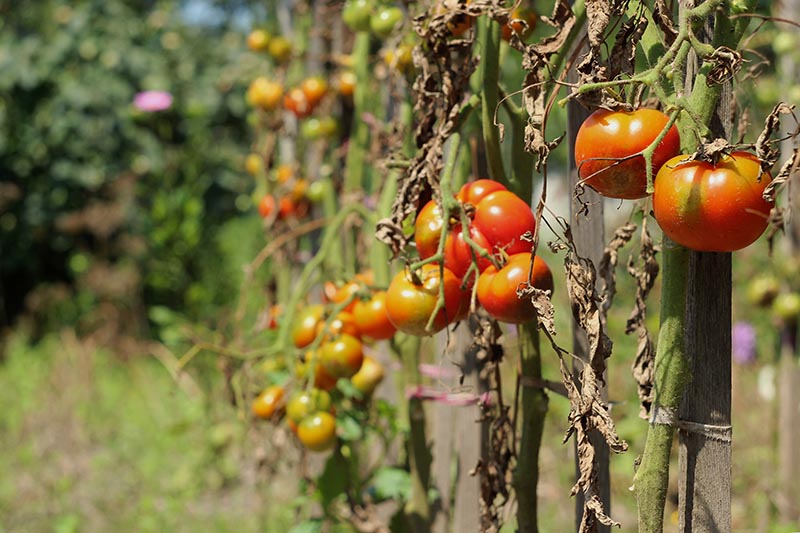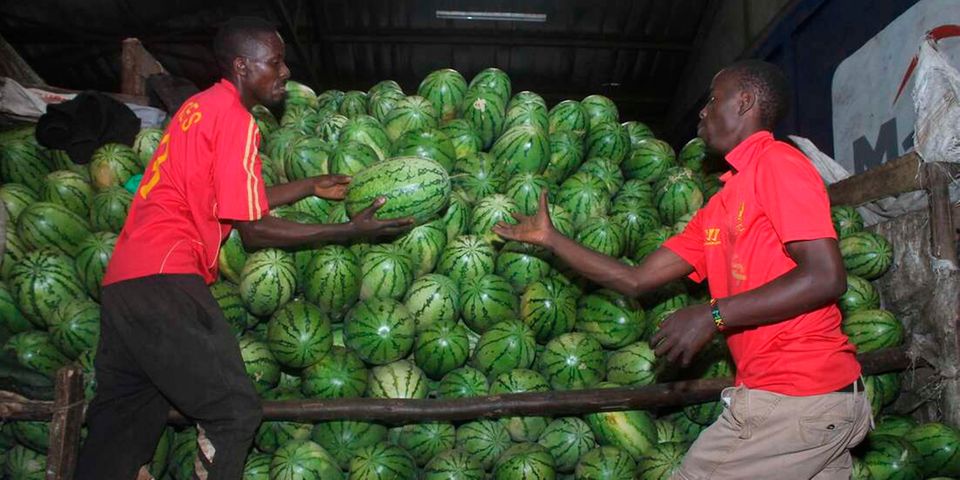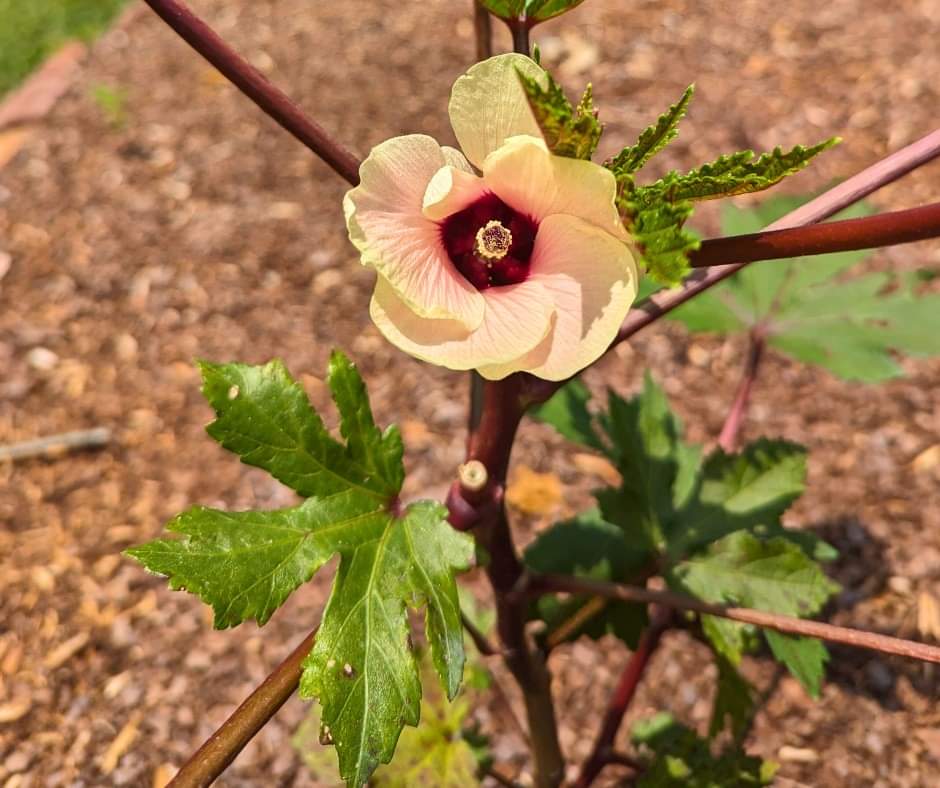The Meteorological Department recently issued an alert that temperatures would fall to an extreme low of 4 degrees Celsius in some areas as the cold spell bites.
This alert portends bad times for horticulture farmers, in particular, those growing crops like tomatoes and capsicum, since fungal and bacterial diseases are common during the cold season.
It gets worse if the cold spell is accompanied by rains.
Tomato growers are among those who suffer the worst wrath of the cold spell. So what diseases should one look out for?

Early blight
This is caused by the fungus Alternaria solani. The disease is common during the cold season, particularly that accompanied by rain, and also when there are temperature fluctuations.
It also occurs during the dry season especially if the crop is under irrigation.
The causal organism can survive in the soil and plant debris waiting for favourable conditions for the disease to occur.
Symptoms: On stems of seedlings and young plants in the field, canker and stem rots can be seen.
Spots develop on the leaves leading to defoliation of the plants greatly reducing yields and fruit quality.
The spots first appear on older leaves and enlarge with time to a diameter of 0.6-1.25cm.
Stems develop dark slightly sunken areas that enlarge and become circular or elongated with light centres.
Fruit abortion may occur. Dark leathery sunken spots develop at the point of attachment to the stem on older fruits.
Control: Spray with copper fungicides, seed treatment and crop rotation.
The pathogen can survive on the tomato seed, that’s why it is advisable to acquire certified seeds that are free of diseases.
Weeding should also be done to remove alternate host plants like black nightshade.
Pruning the lower leaves helps to curb spread of the disease because they are in close contact with the soil thus susceptible.
Apply the recommended amount of fertiliser or in accordance to soil test analysis to help maintain crop vigour.
Planting of tomatoes on raised beds helps to prevent the disease because it improves drainage preventing infection from spreading.
Mulching tomatoes with organic or plastic mulch prevents infestation since the leaves are not in contact with the soil.
Removal of weeds after tillage and burning them helps. Staking of the tomatoes so that they are not in contact with the soil can also help manage the tomato disease.
Late blight
This is caused by a fungus Phytophthora infestans. It is the most destructive disease of tomatoes.
Symptoms: There are water-soaked spots on leaves, which are irregular and greenish black in colour and they enlarge with time.
White mycelia growth is seen on lower side of the leaves.
Small, grayish green water-soaked areas are formed on fruits and they later enlarge to cover almost half of the fruit. There is severe defoliation and rotting of fruits.
Control: Spray with copper-based fungicides during the cold weather, use of clean seeds and media, ensure good aeration on canopy and crop rotation with crops, which don’t belong to the solanaceae family.
Regular weeding and removal of solanaceous weeds or crops that act as alternate hosts of the disease helps.
Remove diseased plant parts or leaves from the field because they may act as a source of inoculum.
Bacterial wilt
This is caused by Ralstoneria solanacearum. The disease causes rapid wilting and death of the plant when it is still green without yellowing of the leaves.
If the stem is cut across, a slimy substance oozes out and the pith may be dark or water-soaked in appearance.
The pathogen is soil-borne but it may also be introduced through irrigation water and trash.
Control: Practice crop rotation with non-solanaceous crops, uproot and destroy infected plants to prevent the spread of the tomato disease, field hygiene, use of certified seeds and soil solarisation.
Bacterial canker
The disease is caused by Clavibacter spp. and is common during wet and cold weather conditions.
Symptoms: There is curling of leaves, followed by yellowing and they eventually turn brown and then collapse.
On the stems, there are light streaks which later become dark.
The steaks later dry up and crack to form cankers. If secondary infection occurs, the bacteria affects leaf surfaces, stems and fruits. Spots are seen on the leaves and sometimes on the fruits.
The disease is difficult to control but planting disease-free seedlings can prevent infestation.
Practice crop rotation with vegetables or crops which don’t belong to the solanaceae family.
Copper-based sprays may be used in case of secondary infection.
The bacteria can survive in tomato debris for a very long time, therefore, it is advisable to remove all from the field if they were infested.
Spray infected plants with bactericides during wet weather. Plant certified disease-free seeds.
Weeding should be carried out to eliminate solanaceous weeds which act as alternate hosts for the causal organism.
If irrigating, avoid sprinkler irrigation in places where the disease is endemic. Avoid working in wet tomato fields and lastly plant tolerant or resistant varieties if they are available.
Verticillium wilt
This is caused by the fungus Verticillium albo-atrum and is common during cold weather conditions. The fungus is soil-borne and can survive in infected plant debris in the soil for a very long time waiting for a host.
Symptoms: Old leaves turn yellow with a characteristic V-shape that narrows from the margin. The symptoms are noticed during fruit setting. Older leaves turn yellow, then later turn brown, wither and may drop.
The disease doesn’t kill the plant but it significantly reduces the yield in the long run.
Due to leaf fall, the fruits are exposed to the sun and they may suffer from sun scald. When the stem is cut, a brown disclouration is seen on the inside.
Control: Plant resistant cultivars, uproot and destroy infected plants by burning, doing crop rotation with non-susceptible crops helps to reduce inoculum, soil solarisation will help to kill the fungus in the first few centimetres of the soil and avoid wetting the foliage if possible.
BY: Seeds Of Gold




